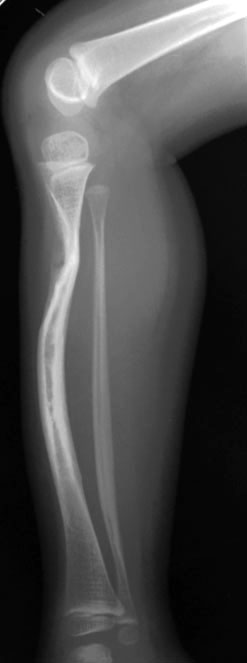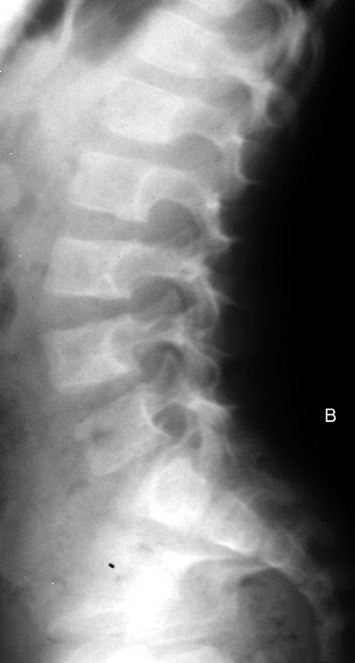Pediatric Radiology > Musculoskeletal > Constitutional Disorders of Bone > Neurofibromatosis
Neurofibromatosis
![]()
|
Neurofibromatosis is the most common neurocutaneous syndrome. This disorder is subdivided into multiple categories, the most prevalent of which are Type 1 (NF1 or Von Recklinghausen disease) and Type II (NF2). NF1 is an autosomal dominant disorder characterized by cafe-au-lait spots, axillary or inguinal freckling, optic gliomas, and plexiform neurofibromas. Musculoskeletal abnormalities include bony overgrowth, bowing, sclerotic changes, and cortical defects. Characteristic findings include:
|
|

|
Neurofibromatosis in a 3-year-old female. Lateral radiograph shows anterior bowing of the tibia. There are sclerotic changes with thinning of the medullary canal in the tibial diaphysis. Also note the lucency at the proximal end of the tibial shaft. |
 |
 |
Neurofibromatosis in a 5-year-old female. A, Lateral radiograph shows the progression of this disease with the development of pseudarthrosis of the tibia and fibula. B, Lateral radiograph of the spine demonstrates posterior scalloping of the vertebral bodies. |